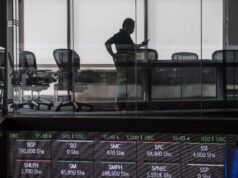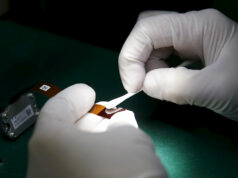Gov’t execs expect state spending to have picked up
By Beatrice M. Laforga
STATE SPENDING is expected to have picked up further this month as government offices try to make up for lost time last semester due to a four-and-a-half month delay in enactment of the 2019 national budget, officials told reporters on Tuesday.
A private economist said, however, that while the government can “chase” disbursement targets, it “might have a hard time” catching up with the full-year program.
Undersecretary Tina Rose Marie L. Canda of the Department of Budget and Management’s (DBM) Budget Preparation & Execution Group said in a briefing in Manila that, after bigger disbursements in July, the department expects that in “August it rose” further, leading to more improvements towards yearend since expenditures “usually grow very fast in the last quarter.
“There was already an uptick for August,” Ms. Canda said, adding: “We’re optimistic that we will meet the program, the disbursement targets, barring no unprecedented event that will happen.”
National Treasurer Rosalia V. De Leon told reporters separately after a regular auction of government securities: “We’re looking into the [second week of] August na and we’re seeing a significant jump in terms of the disbursements… pati ’yun sa (including) infrastructure…”
Latest available DBM data showed infrastructure and other capital outlays dropping by 11.7% to P311.4 billion last semester from P352.7 billion in 2018’s first half, and missing a P392.9-billion target for the period by 20.8%. The government plans to spend P861.2 billion on infrastructure this year, 24% of the P3.662-trillion national budget that was signed into law on April 15, four-and-a-half months late.
That was blamed for a disappointing 5.5% gross domestic product expansion last semester, that compared to the government’s already tempered 6-7% full-year goal for 2019.
For next year, the Executive branch has proposed P972.5 billion in infrastructure funds, about 12.9% more than this year’s allocation and also 24% of a proposed P4.1-trillion national budget.
State spending catch-up was under way as of July, according to data the DBM released on Aug. 15, as state offices moved to make up for subdued expenditures for much of last semester. The DBM said then that while notice of cash allocation (NCA) — the authority the department gives to state offices to use cash allocated to them — dropped by 17% to P1.688 trillion as of July from P2.033 trillion in last year’s first seven months, and NCA used dipped 1.57% to P1.569 trillion from P1.594 trillion, NCA utilization actually improved to 93% from 78% in the same comparative periods.
“The government’s year-to-date NCA utilization rate is 93%. That’s a testament to various line agencies’ capability to disburse and allocate funds and implement programs and projects that they are tasked to do,” DBM Acting Secretary Wendel E. Avisado said in the same DBM briefing.
The Treasury reported on Thursday last week that state spending picked up by 3.43% to P339.4 billion in July from P328.1 billion a year ago, although primary expenditures — or net of interest payments — edged up by just 1.81% to P288.4 billion from P283.3 billion. Still, that was a turnaround from a 3.06% drop in primary expenditures in June.
The seven months to July still saw the government spending 0.11% less at P1.93 trillion from P1.932 trillion a year ago, with primary spending still contracting by 1.32% to P1.699 trillion from P1.721 trillion.
Sought for comment, Nicholas Antonio T. Mapa, senior economist at ING Bank NV-Manila, said: “I think spending for the full year… we might have a hard time doing that [hitting the program] kasi nga (precisely because of) the budget delay.”
“… [I]t’s hard to fast-track. I mean you could chase it, you could disburse as much as you can, given that you’re disbursing na dapat nilabas mo (what you should have spent) in 12 months in only six months, medyo mahirap talaga (it will be really difficult to hit the target),” Mr. Mapa said in an interview at the sidelines of a separate economic forum.
And “given that last year third-quarter spending was very strong, I’d say maybe we can be happy with… growth, kahit (even if just) small or single digit,” he added.
“But in the fourth quarter, sana we can see double digits again…”



